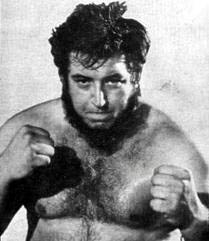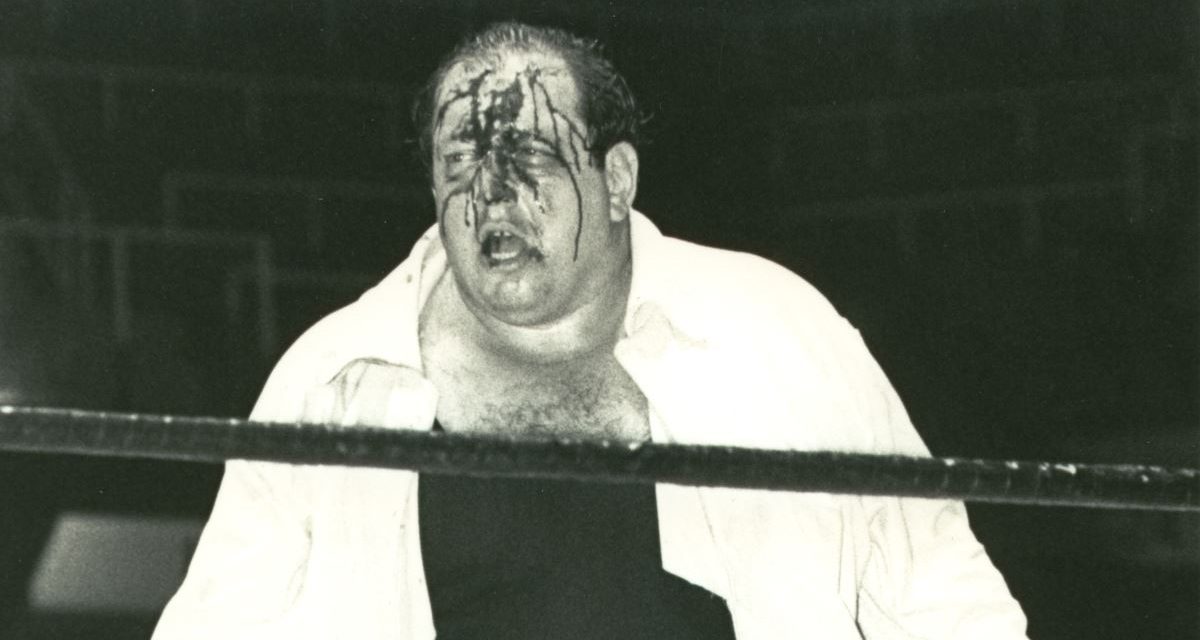Everyone will remember Gorilla Monsoon in a different way. Some will see a wrestler, others an announcer and young fans will see him as the WWF President.
No matter how you see Gorilla Monsoon, his legacy in the wrestling world will always be remembered. Monsoon died on Tuesday morning at the age of 62.

Born Robert Marella on June 4, 1937, in Rochester, NY, Monsoon grew fast for his age. He ended up being about 6’5″ and over 400 pounds at his peak.
He started his career under the name Gino Marella, but he soon took the name Gorilla Monsoon after falling under the wings of manager Wild Red Berry in the late 1950s. He was a classic villain, and he often dominated matches based on his size alone.
Monsoon became a crowd attraction because he was one of only a few 400-pound-plus wrestlers in the business. The crowd came out in numbers to see him, but they often also came with boos.
Killer Kowalski and Monsoon teamed up on November 14, 1963, to win the WWWF Tag Team titles in Washington D.C. The win for Monsoon was his greatest thus far in his career.
The gold would not stay long. The duo would walk out of Teaneck, NJ, on December 28 of the same year without the titles. The Tolos brothers, Chris and John, would slip by the much bigger team of Kowalski and Monsoon.
Successful enough in the United States, Monsoon embarked for Japan. He wrestled quite often for such organizations as JWA. He biggest success came on May 12, 1972 when he reached the finals of the 14th Annual World League Tournament. A young Giant Baba won the round-robin tournament.
By the time the 1970s came around, Monsoon had changed his ways in the ring. He was now getting cheered, and he was using it to his advantage. He would dominate battle royals by throwing two, three four or sometimes five opponents into a corner. He would then proceed to charge into them with his giant girth.
Muhammad Ali will never forget Monsoon. Ali was conducting a training session before his 1976 fight with Antonio Inoki. Ali claimed he could take any wrestler, and so Monsoon grabbed Ali and placed his in an airplane spin. Monsoon looked for more, but Ali quickly ran for safety.
Then the night came when Ali was to take on Inoki. Monsoon was in Andre the Giant’s corner for an undercard match where Andre took on boxer Chuck Wepner. Andre dominated the match, and Wepner was flung outside the ring. When Wepner’s trainer looked to assist Wepner to safety, Monsoon pushed him away. The push nearly started a riot without the managers, press and observers at ringside.
By the time the WWF was formed in the late 1970s, Monsoon had hung up his trunks. He was hired as a ring announcer for the WWF.
He was known as the announcer of the first Wrestlemania in 1985. His co-announcer, Jess Ventura, was not as ready for the event.
“I had to literally hold him up,” Monsoon once said about Ventura. “He was so nervous, I did not think he could go on.”
Monsoon and Ventura eventually got things together and went on to announce the first five WrestleMania events. Monsoon would also host Prime Time Wrestling starting in 1985 on the USA Network. Ventura would co-host till 1986 when Bobby Heenan took his spot while Ventura wandered into Hollywood.
Heenan and Monsoon seemed made for each other. Heenan, who wished to make light of what was happening in the ring, always contradicted Monsoon, who wanted the call the match straight. The two were a match made in heaven.
Monsoon was best remembered for his style of announcing. He would name body parts by there heavy technical names. A “shoulder” might be called a “external occipital protuberance.” Also, Monsoon would respond to a Heenan joke with the words, “Will you stop already!”
The pair did not last. Monsoon suffered his first mild heart in the late 1980s. His health was always a problem due to his weight. Monsoon had been less than 300 pounds since retiring from the sport, but his size was still becoming a health factor.
Monsoon went into the 1990s with his job intact. He was said to have been given a secure job for as long he liked in the WWF. Few would realize he would spend the rest of his life there. (Few realize that he was actually a minority owner in Vince McMahon Sr.’s old WWWF.)
In 1994, being inducted into the WWF Hall of Fame honored Monsoon. He was entered with Bobo Brazil and Buddy Rogers in the second class inducted.
It would be one month exactly after his induction that Monsoon’s first nightmare would be felt. Monsoon’s son, Joseph Marella, was killed while driving his car. The WWF referee fell asleep at the wheel, and Monsoon and his wife would feel the pain.
Monsoon and his son were never publicly connected by the WWF, but Monsoon did not feel the same off camera. Monsoon was happy that he spent time with son. They made up time that was missing when Monsoon wrestled while Joseph grew up.
In the summer of 1995, Monsoon was given a bump up in the WWF. He would take the on-camera role as President of the WWF. His first move was to sign a rematch from WrestleMania of that year. Shawn Michaels and Scott Hall (then Razor Ramon) would see their second ladder match for the Intercontinental title. The match will always be remembered as questionably the greatest ladder match of all-time.
The WWF had signed Big Van Vader from the WCW in late 1995. Vader would enter the WWF in early 1996 by splashing Monsoon on a live edition of RAW. Monsoon would take time off from his on-camera role.
He would comeback soon, but his health and the health of his wife would keep him off the air for the rest of his life. He would make his last appearance for a wide televised crowd at the 1999 WrestleMania. He served as a judge for the Butterbean-Bart Gunn match and received a good cheer from the Philadelphia fans.
Call him Gino, call him Gorilla but remember him always. Gorilla Monsoon made an impact in the ring, on the microphone and behind the set.
And now, sadly, he is gone.
RELATED LINKS

